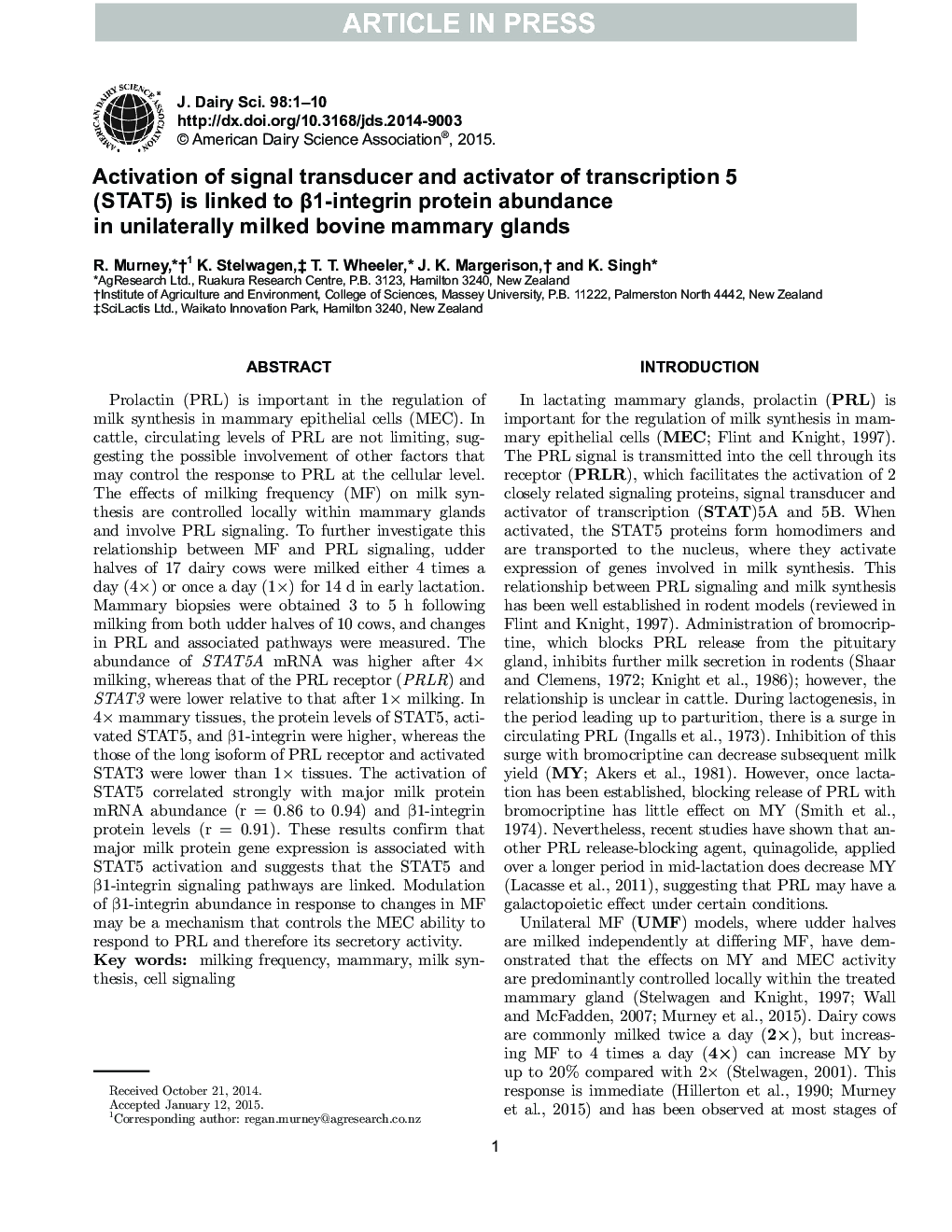| Article ID | Journal | Published Year | Pages | File Type |
|---|---|---|---|---|
| 10975530 | Journal of Dairy Science | 2015 | 10 Pages |
Abstract
Prolactin (PRL) is important in the regulation of milk synthesis in mammary epithelial cells (MEC). In cattle, circulating levels of PRL are not limiting, suggesting the possible involvement of other factors that may control the response to PRL at the cellular level. The effects of milking frequency (MF) on milk synthesis are controlled locally within mammary glands and involve PRL signaling. To further investigate this relationship between MF and PRL signaling, udder halves of 17 dairy cows were milked either 4 times a day (4Ã) or once a day (1Ã) for 14 d in early lactation. Mammary biopsies were obtained 3 to 5 h following milking from both udder halves of 10 cows, and changes in PRL and associated pathways were measured. The abundance of STAT5A mRNA was higher after 4à milking, whereas that of the PRL receptor (PRLR) and STAT3 were lower relative to that after 1à milking. In 4à mammary tissues, the protein levels of STAT5, activated STAT5, and β1-integrin were higher, whereas the those of the long isoform of PRL receptor and activated STAT3 were lower than 1à tissues. The activation of STAT5 correlated strongly with major milk protein mRNA abundance (r = 0.86 to 0.94) and β1-integrin protein levels (r = 0.91). These results confirm that major milk protein gene expression is associated with STAT5 activation and suggests that the STAT5 and β1-integrin signaling pathways are linked. Modulation of β1-integrin abundance in response to changes in MF may be a mechanism that controls the MEC ability to respond to PRL and therefore its secretory activity.
Related Topics
Life Sciences
Agricultural and Biological Sciences
Animal Science and Zoology
Authors
R. Murney, K. Stelwagen, T.T. Wheeler, J.K. Margerison, K. Singh,
